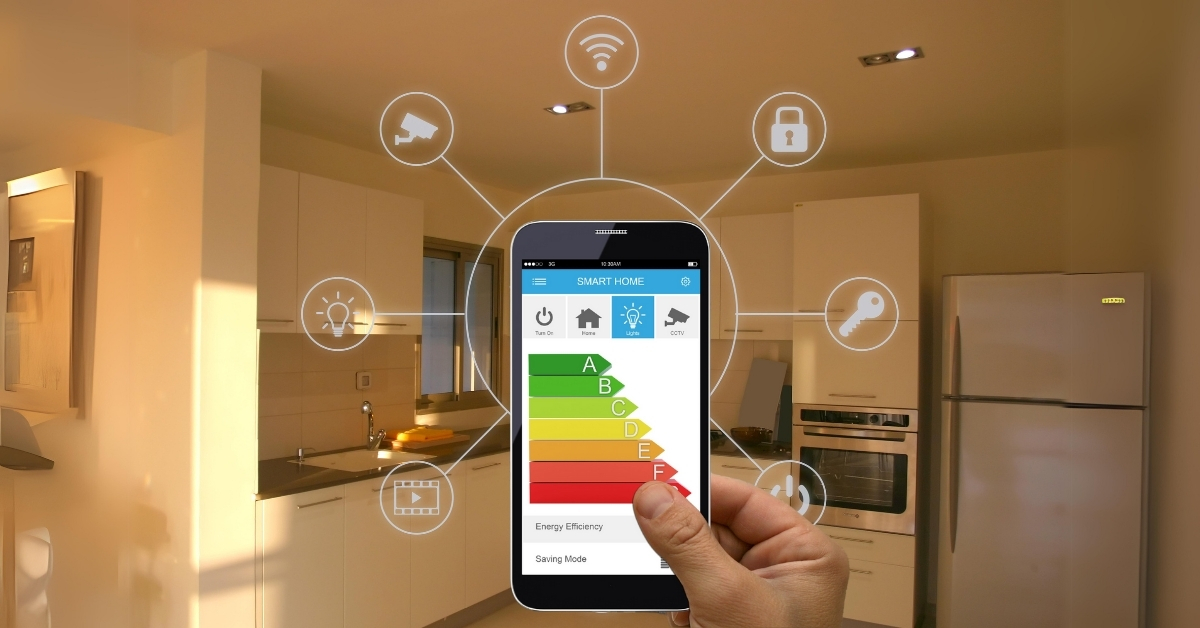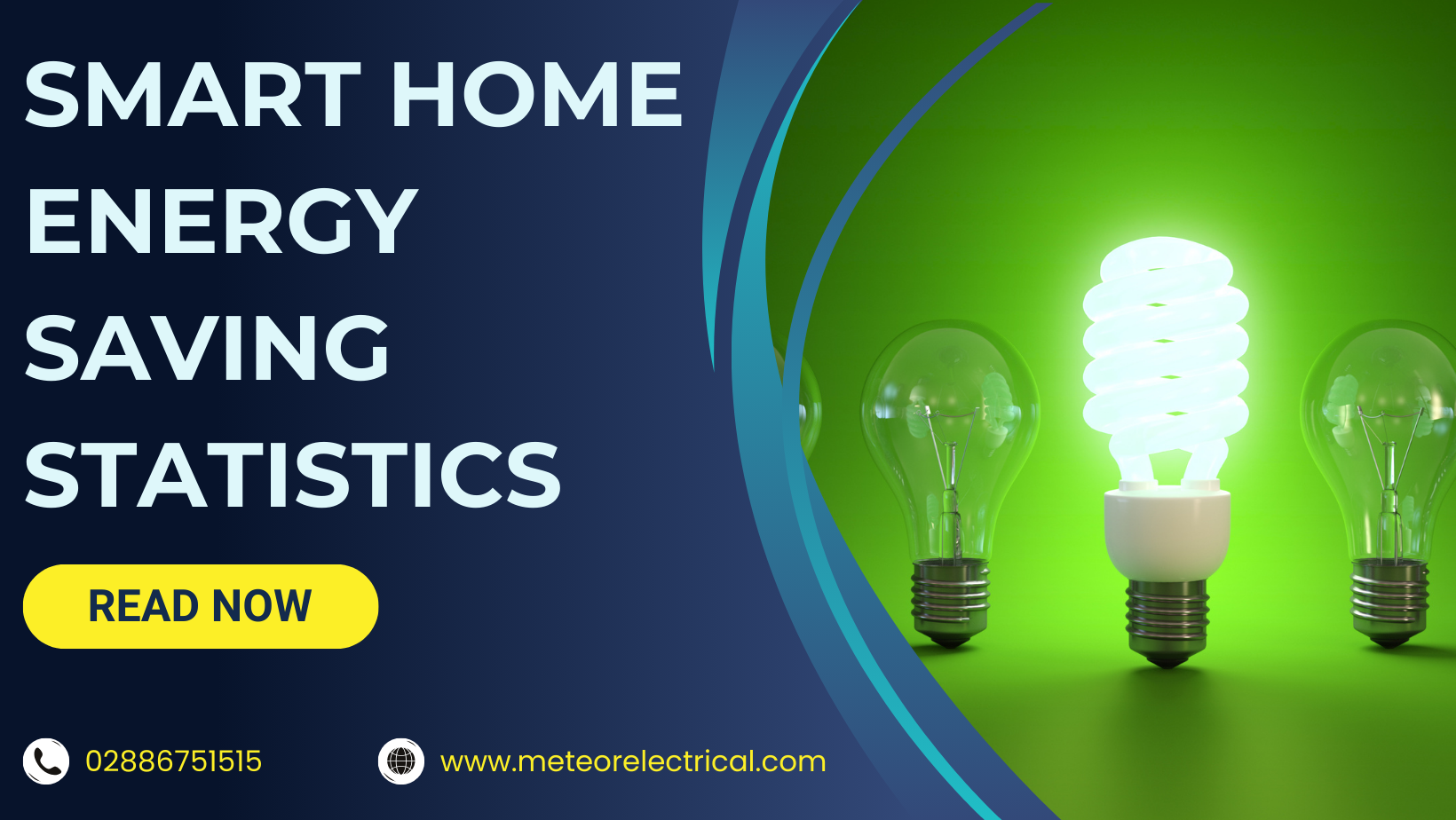Smart Home Energy Saving Statistics
The Smart Revolution: Transform Energy Savings with Key Smart Home Statistics
Energy efficiency is rapidly becoming a top priority for households around the globe. One of the most innovative ways to achieve this is through the adoption of smart home technology. Smart homes not only offer convenience and comfort but also significantly reduce energy consumption.
Imagine a home where you can control the lighting, heating, and appliances from your smartphone or voice assistant. This isn't science fiction; it's the reality of smart homes. With a rising trend in smart product ownership, especially in the UK, more people are discovering the benefits of integrating technology into their daily lives.
Before you embark on your journey to create a smart home, here are some compelling energy-saving statistics and insights from around the world.

Worldwide Smart Home Statistics

The United Kingdom
The UK's smart home market is thriving, and here's why:
- 5.3 million out of 27.8 million households are using smart home products, accounting for 19.7% of all UK households. This significant penetration highlights the growing popularity and trust in smart technology.
- In 2022, the smart home market revenue in the UK was projected to reach an impressive $7.85 billion, with an annual growth rate of 16%, potentially hitting £11.94 billion by 2026 (Statista). This growth underscores the rapid adoption and investment in smart home solutions.
- During the pandemic, UK households spent a staggering £33 billion on smart devices. This surge in spending reflects a strong inclination towards enhancing home comfort and efficiency during challenging times (Insight DIY).
The UK's adoption of smart home technology is driven by the quest for convenience, energy efficiency, and improved living standards. This upward trend indicates a keen interest among UK residents in optimising their homes with the most efficient products available.
Germany
Germany is also making significant strides in the smart home market:
- German residents conduct approximately 107,480 searches for smart home products each month, with smart TVs being the most popular. This high search volume shows a strong interest and engagement with smart home technology (GW News).
- By 2021, 41% of Germans owned at least one smart home device. This number is expected to increase steadily, showcasing the growing trust and reliance on smart technology in everyday life (IFA News).
- The smart home market revenue in Germany is projected to reach $6.62 billion by 2026 (Statista). This growth potential highlights Germany's robust market for smart home products.
The United States
The US leads the global smart home market with impressive numbers:
- An estimated 47.4 million smart homes in 2022 represent nearly 35% of all homes in the country. This widespread adoption underscores the US's leadership in integrating smart technology into daily living (Statista).
- Smart home sales in the US are expected to reach $47 billion by 2025, showcasing significant growth potential and a strong market trajectory (Statista).
China
China is rapidly advancing in smart home technology:
- 68 million smart households out of 500 million indicate a substantial adoption rate in this populous country (Statista).
- The market is projected to grow at a rate of 15.8%, reaching a volume of $42.6 billion by 2026 (Statista). This growth reflects China's increasing investment in smart technology.
- Chinese homeowners focus more on connectivity, comfort, and lighting devices. This preference highlights different consumer priorities compared to other countries, emphasising the importance of tailored smart home solutions (Research and Markets).
The global smart home market is not just a trend but a revolution in how we live. As technology advances, more households are discovering the benefits of smart devices, from energy savings to enhanced comfort and convenience. The statistics from these leading markets demonstrate a strong and growing demand for smart home solutions, paving the way for even more innovation and adoption in the years to come.

Smart Home Energy-Saving Product Statistics
Smart TVs
Smart TVs are a cornerstone of many smart homes, thanks to their advanced features and energy efficiency:
- In the US, smart TV penetration is at an impressive 87% (Statista).
- In the UK, smart TV adoption reached 67% in 2021 (Statista).
These devices not only offer enhanced user experiences but also consume significantly less energy compared to traditional TVs. Modern smart TVs often utilise LED technology, which consumes less energy than older LCD and plasma models. This switch to energy-efficient displays helps reduce electricity bills while providing high-quality viewing experiences.
Smart Light Bulbs
Smart lighting is another critical component of smart homes, offering both convenience and significant energy savings:
- The global market for smart lighting was valued at $10.9 billion in 2021 and is projected to grow to $27.7 billion by 2026 (Markets and Markets).
- Smart LED bulbs consume 90% less energy than traditional incandescent bulbs, offering substantial savings on energy bills (Digital Trends).
Smart light bulbs can be controlled remotely, set on schedules, and adjusted for brightness, enhancing energy efficiency and home ambiance. This shift not only helps reduce energy consumption but also adds to the convenience and customisation of home lighting solutions.
Smart Heaters
Heating accounts for a significant portion of household energy consumption, making smart heaters an excellent investment:
- Smart heaters equipped with programmable thermostats can help save up to 20% on energy bills (Jacob's Heating).
- Despite higher upfront costs, these devices pay for themselves within two years, making them a wise investment for energy-conscious homeowners (Comfy Living).
Smart heaters offer precise control over home heating, allowing users to set schedules and maintain optimal temperatures efficiently. This not only ensures comfort but also maximises energy savings, particularly in colder climates where heating costs can be substantial.
Smart Plugs
Smart plugs are a simple yet effective way to reduce energy consumption by eliminating standby power, also known as vampire energy:
- Standby power accounts for a considerable amount of wasted energy, and smart plugs help mitigate this by cutting off power to devices that are not in use.
- The global market for smart plugs was valued at $4.92 billion in 2020, with expected growth driven by their energy-saving benefits (Emergen Research).
Smart plugs provide a straightforward solution for managing and reducing energy consumption. They allow users to control appliances remotely, schedule power usage, and monitor energy consumption, making it easier to optimise energy use and reduce unnecessary costs.
These smart home products collectively contribute to significant energy savings, enhancing both convenience and sustainability. By integrating these technologies, homeowners can enjoy a smarter, more efficient, and eco-friendly living environment.
Final Takeaway
As we navigate the evolving landscape of smart home technology, the benefits of integrating energy-saving products become increasingly clear. From smart TVs that enhance viewing experiences while reducing energy consumption to smart light bulbs that offer both convenience and cost savings, advancements in smart home devices are reshaping our daily lives. Smart heaters and smart plugs further contribute to this energy-efficient ecosystem, offering precise control over household energy use and eliminating unnecessary power wastage.
Statistics from leading markets like the UK, Germany, the US, and China highlight a global trend toward adopting smart home technologies. These nations showcase the potential for growth and the substantial impact smart home products can have on energy efficiency and overall living standards.
In conclusion, investing in smart home energy-saving products is a wise decision for those looking to reduce their carbon footprint, lower energy bills, and enhance the comfort and convenience of their homes. The future of smart home technology is bright, and the possibilities for energy efficiency and improved living standards are limitless. Now is the time to make your home smarter and more energy-efficient, paving the way for a sustainable future.

FAQ: Smart Homes and Energy Efficiency
1. What are the benefits of a smart home?
Smart homes offer numerous benefits, including increased convenience, improved energy efficiency, enhanced security, and better control over household devices. By automating and remotely controlling various systems, homeowners can save time, reduce energy bills, and enjoy a more comfortable living environment.
2. Do smart plugs save energy?
Yes, smart plugs can help save energy by eliminating standby power consumption, also known as vampire energy. They allow you to turn off appliances remotely, set schedules, and monitor energy usage, ensuring devices are only on when needed.
3. How do smart thermostats help save energy?
Smart thermostats help save energy by allowing precise control over your home’s heating and cooling systems. They can learn your schedule, adjust temperatures automatically, and be controlled remotely, ensuring efficient energy use and reducing unnecessary heating or cooling when you’re not home.
4. Are smart light bulbs worth the investment?
Yes, smart light bulbs are worth the investment. They use LED technology, which consumes significantly less energy than traditional incandescent bulbs. Additionally, their ability to be controlled remotely and set on schedules can further enhance energy savings and convenience.
5. What is the average cost savings with smart home devices?
The cost savings with smart home devices vary depending on the types of devices and their usage. On average, smart thermostats can save up to 20% on heating and cooling bills, while smart LED bulbs and plugs can significantly reduce electricity costs by minimising waste and optimising energy use.
6. Are there any security concerns with smart home devices?
While smart home devices offer many benefits, there are security concerns related to potential hacking and data privacy. It’s essential to use strong, unique passwords, keep your devices updated with the latest firmware, and consider using additional security measures like two-factor authentication to protect your smart home system
.
7. Can I install smart home devices myself?
Many smart home devices are designed for easy installation and can be set up by homeowners without professional help. However, some systems, like smart thermostats or security systems, may require professional installation to ensure proper setup and functionality.
8. How do smart TVs contribute to energy savings?
Smart TVs use advanced technologies like LED displays, which consume less energy than older LCD and plasma models. They also offer features like automatic brightness adjustment and sleep modes, which help reduce energy consumption.
9. What are the most popular smart home devices?
The most popular smart home devices include smart speakers (like Amazon Echo and Google Home), thermostats, lighting, plugs, and security systems. These devices offer a range of benefits, from convenience and entertainment to energy savings and enhanced security.
10. How can I get started with creating a smart home?
To get started, identify your needs and priorities, such as energy savings, security, or convenience. Invest in a smart hub or speaker, then gradually add compatible devices like smart plugs, bulbs, and thermostats. Many devices are easy to install and can be controlled through smartphone apps, making it simple to build and expand your smart home system.

